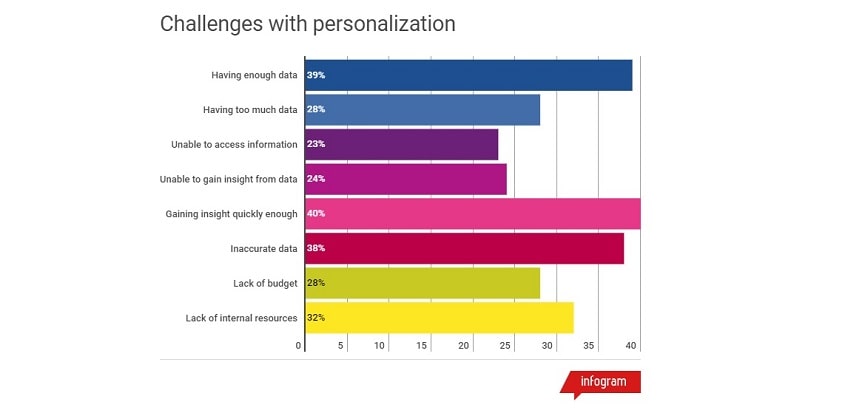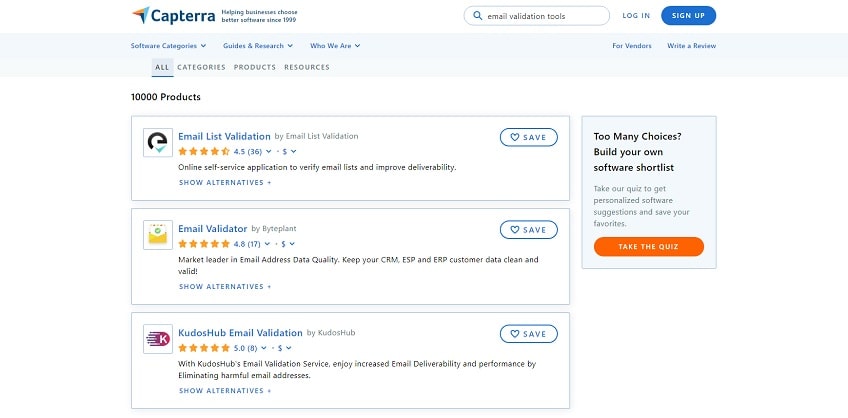It’s critical for firms trying to increase sales and marketing efficiency to use database segmentation since it may help them enhance their lead generation efforts and learn more about their current clients. How much time do you really want your sales and marketing teams to spend guessing?
We’ll demonstrate what we mean in the following paragraphs:
- Best strategies for segmenting and analyzing data;
- How to overcome the most prevalent obstacles to accurate segmentation;
- Paying attention to the organization of your data has real advantages.
What is a database segmentation?
Let’s begin by defining the term “Database Segmentation.”
In order to sort and examine your data more conveniently, database segmentation divides and organizes your data into specific groupings.
Your sales and marketing teams will benefit greatly from segmented data since it makes information easier to understand and put to use.
We’ll concentrate on sales and marketing data segmentation (sometimes referred to as sales segmentation).
Sales and marketing may benefit from data segmentation, but it isn’t the sole use case.
Data segmentation may be used to find insights that increase customer happiness while also increasing revenue, which we’ll explore in detail as well.
Difference between Database Segmentation and Targeting
In addition, we must be aware of the distinction between segmentation and targeting. The two conceptions are related, yet they’re not the same thing.
Segmentation is the process of breaking data into smaller groupings so that you may make better use of it.
A cold email campaign, for example, might be segmented based on job titles, firm size, or other identification data. We ensures that each individual on the list gets addressed in a manner that is both effective and personalized.
Targeting is more precise and successful when you have divided your data.
So, what role does targeting play here?
In the sales and marketing department, targeting is the process of deciding on the best techniques for promoting the company to your desired clients.
This might imply figuring out the greatest way to get in touch with your desired target audience (e.g. running ads on LinkedIn vs. on Twitter).
You can efficiently target clients since you have segmented your audience.
In order to ensure that your targeting is as precise as possible, you need a systematic approach to segmenting your data. Your sales team will struggle to see success with their cold emails and won’t be able to close many deals, as they’re talking to the wrong people.
Database Segmentation in Action: Increased Revenue and Happier Customers
Data should be used to help your team make better choices.
If you’re undecided about spending additional effort on database segmentation, this case study from the Harvard Business Review may assist.
When firms begin segmenting data, it shows significant avenues for them to expand.
The case study focuses on Hill-Rom, a successful corporation whose development had stagnated.
They discovered that their greatest consumers spent 40% more than the typical customer by segmenting their data based on key characteristics.
They used their findings to refocus their sales efforts, resulting in an 11 percent increase in revenue per employee. Customer satisfaction has also grown.
If you’re on the fence about investing time refining your database segmentation procedures, we suggest reading the case study. If you decide you want to achieve comparable outcomes, return to this site and we’ll teach you how.
The Most Important Advantages of Database Segmentation
Creating well-defined database segments helps the whole organization.
Let’s take a look at why your firm should be concerned about database segmentation methods.
1. Generating Leads
Every day, your sales and marketing teams utilize data to assist them determine who to contact and how to target them.
Your staff can utilize their time more efficiently if they know who your greatest customers are, what they care about, and what form of communication they prefer.
Your insights may also be used to rate leads and prioritize well-qualified accounts in your pipeline.
2. Increases the success rate of cold outreach
Data segmentation may assist your team in locating accounts that meet your SQL criteria before approaching them.
This will be especially simple if you use a B2B data source like Leadiro to find leads.
Your sales staff will save a lot of time by understanding firmographic and technographic facts about a business, as well as who the main decision-makers are.
Your cold email success will improve as a result of your learning-based targeting and message enhancements.
3. Sorts and prioritizes support requests
Knowing who your top clients are can assist your customer service personnel in prioritizing their task.
Your support staff will recognize your greatest clients and may then prioritize help requests while also giving feedback to account representatives on crucial accounts.
This will assist to increase the Customer Lifetime Value (CLTV) of your top customers.
Problems with Effective Database Segmentation
Database segmentation is a critical activity that many businesses struggle with.
According to Experian research, 94 percent of businesses find database segmentation difficult.

Many businesses struggle to leverage data to aid with personalization.
They listed the top three issues that businesses face, and they are as follows:
- Getting enough insight fast
- Having sufficient data
- Incorrect data
Let’s see how you can get beyond these obstacles.
1. Getting enough insight fast
Database segmentation takes time. Everyone in the firm will get irritated if it takes too long, and you won’t be reaping the rewards.
You need to start by asking yourself a crucial question before you can take on this assignment.
What is the purpose of data segmentation?
The data may be sorted and utilized right away as you are aware of your desired result.
This will provide your sales staff access to precise, segmented prospect lists, enabling them to get in touch with the appropriate individuals at the appropriate time.
Based on actual findings, your marketing team will be able to create new programs and improve their targeting.
2. Having sufficient Data
Not sure whether your data is sufficient to apply database segmentation?
You are almost likely do in most situations.
Get important information from your current client data if you have paying customers.
You can see patterns by figuring out who your greatest clients are (as we previously indicated, taking a look at the clients with the highest CLTV is a good sign).
Consider the scenario when all of your top clients use a crucial feature more often than the rest of your clientele.
The logical conclusion would be that these clients have a common set of problems. In order to complete more business, your sales staff may then target that prevalent pain point in cold emails or calls.
Additionally, you may examine Google Analytics data gathered from your website or the Facebook Ads audience that responds best. These data sets may help you enhance your targeting and data segmentation procedures.
A lack of data will undoubtedly present difficulties for startups with little traffic and no consumers.
But by segmenting your B2B data lists, you can make sure that your sales outreach is as tailored as possible.
3. Incorrect Data
Your contact database may include inaccurate information given that 28% of B2B sales emails result in bounces.
As you are aware, a successful sales team depends on reliable data. Finding and contacting quality leads won’t be feasible without it.
You may take action to lessen data inconsistency and ultimately save your team time.
First, you may use best practices for data validation. Your team will have access to clear, reliable data thanks to data validation.
Before sending a cold email campaign to prospects, verify contact information using email validation tools.

You don’t have to worry about carrying this out on your own using Leadiro. To make sure they are correct and prepared for usage in your sales and marketing, we routinely check and sanitize our B2B contact data (we can even tele-verify your contact lists).
You may upload bounced emails back to Leadiro if it happens. The data will then be cleaned, and your credits will be refunded so you may download more.
How should database segmentation be used practically?
You should know how to put your database segmentation efforts into practice now that you are aware of what data segmentation is, its advantages, and how to avoid frequent errors.
When you have data that has been properly segregated, you may follow these practical procedures.
1. Develop a better B2B buyer persona
Knowing your target market in-depth is the first step to effective marketing.
Using segmented client data, you can see precisely who your ideal customer is. In order to uncover additional prospects that share your buyer persona’s essential attributes and characteristics, you may utilize a service like Leadiro.
Your sales staff will save time that would otherwise be used to find qualified leads and get precise contact information.
2. Make your ABM campaigns better
Clearly defined targeting is essential for every Account-Based Marketing (ABM) strategy.
Poor targeting costs money and effort.
Your team may create more leads and spend more time closing transactions thanks to effective targeting.
A crucial first step to achieving precise targeting is good data segmentation.
This enables you to develop highly tailored programs that work effectively across all platforms, whether they include cold email, cold calling, or LinkedIn PPC marketing.
Your ABM efforts will be more effective the more relevant your outreach is to the receiver.
3. Divide Up Your Client Database
Although this concept has been mentioned many times throughout the essay, we should elaborate on the advantages of segmenting your client information.
Every aspect of the business benefits from having a clear understanding of who your top customers are.
You may use behavioral indicators to divide your consumer database into different groups if you offer digital goods. These may include things like how often customers visit, which features they use the most, how frequently they purchase more credits, when they’re most likely to upgrade their membership, and so on.
With the help of all these data pieces, you can identify your most important clients.
A Conclusion
Without a question, database segmentation will aid in the expansion of your company. Your sales and marketing team’s efforts will be better understood. Spend more time finding and closing important accounts that will be a fantastic match for your company.
If you want to accomplish this properly, ongoing and consistent data segmentation is essential. Incorporate it into your company’s culture and make sure that everyone is on board. If you need help, you can contact us and we will glad to help.



